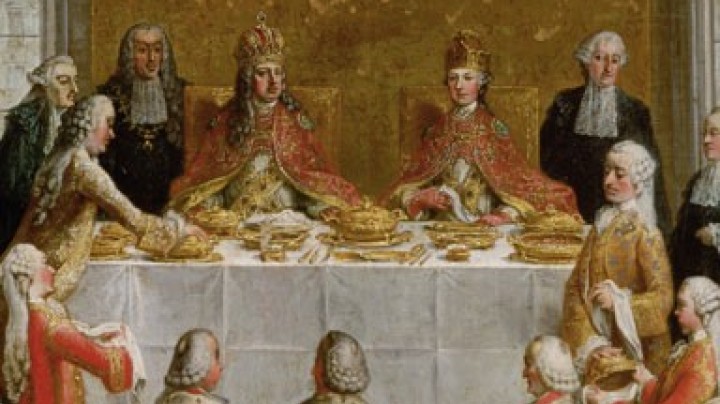Almost a crown: The Austrian archducal coronet
The archducal coronet was the symbol of a title that was exclusively (and not quite legitimately) created for the House of Habsburg: there were plenty of dukes in the world of feudal aristocracy, but archdukes existed only in Austria.
The prefix ‘arch-’ always signifies pre-eminent status: just as an archbishop ranks above a bishop, the archduke came before the normal dukes in the realm. The title stems from the forged Privilegium Maius commissioned by Duke Rudolf IV of Habsburg in 1359, and is regarded as a reaction to the Golden Bull of Emperor Charles IV, which laid down the modalities of the election and coronation of the Holy Roman and German kings – and denied the Habsburgs an electoral vote. The young and ambitious Rudolf was prepared to forge documents in order to consolidate his dynasty’s status and created the title of Archduke of Austria. This underscored the special status of the Habsburgs as being directly after the electors, but before the other imperial princes. However, the Privilegium was exposed as a forgery, and Emperor Charles IV of the House of Luxembourg repudiated the rights it had accorded the Habsburgs.
To give visible and palpable form to his usurped rank, Rudolf commissioned the making of a sovereign insigne resembling a king’s crown; the original version shown on his famous portrait has not been preserved – assuming it ever existed.
Rudolf’s early death meanwhile ended furtherance of the ambitious plans to upgrade the Habsburgs’ position in the empire. These aspirations were revived by Frederick III, who honoured his ancestor as a role model. By 1453, Frederick had assumed rule over the Holy Roman Empire and in this year decreed an affirmation of the forged privileges by virtue of his imperial rights of majesty. This made the Duchy of Austria into an archduchy, and from then on the Habsburgs officially called themselves Archdukes of Austria. The title was hereditary in the House of Habsburg and formed the most important part of the titular trappings of all legitimate members of the dynasty.
Subsequently, several versions of archducal coronets were made; they were symbols of the title and not comparable with the ‘Sacred Crowns’ of Bohemia or Hungary, which embodied the respective kingdoms and of which a single authentic version existed.
The best known example of an archducal coronet was endowed in 1616 by Archduke Maximilian III, Regent in Tyrol and High Master of the German Order, a brother of Rudolf II. It was transferred to Klosterneuburg Monastery near Vienna, where it is still kept today. The archducal coronet was preserved in Klosterneuburg together with the relic of the skull of St Leopold, the patron saint of Austria, thus purportedly transferring the divinely bestowed powers of the saint onto the ‘crowned’ ruler.



















